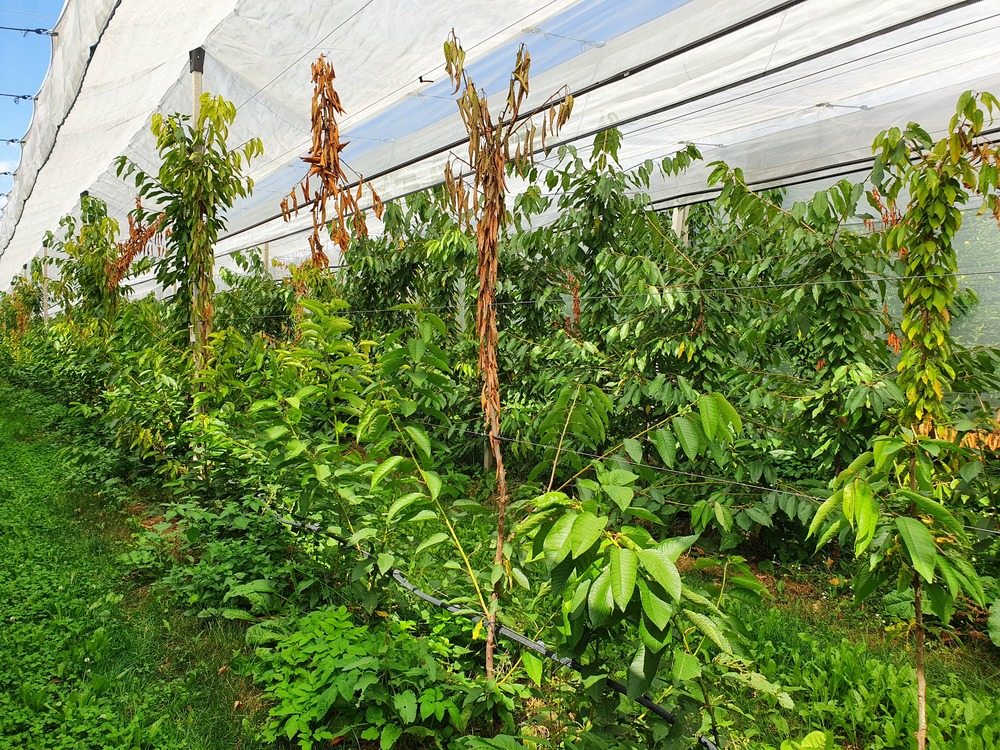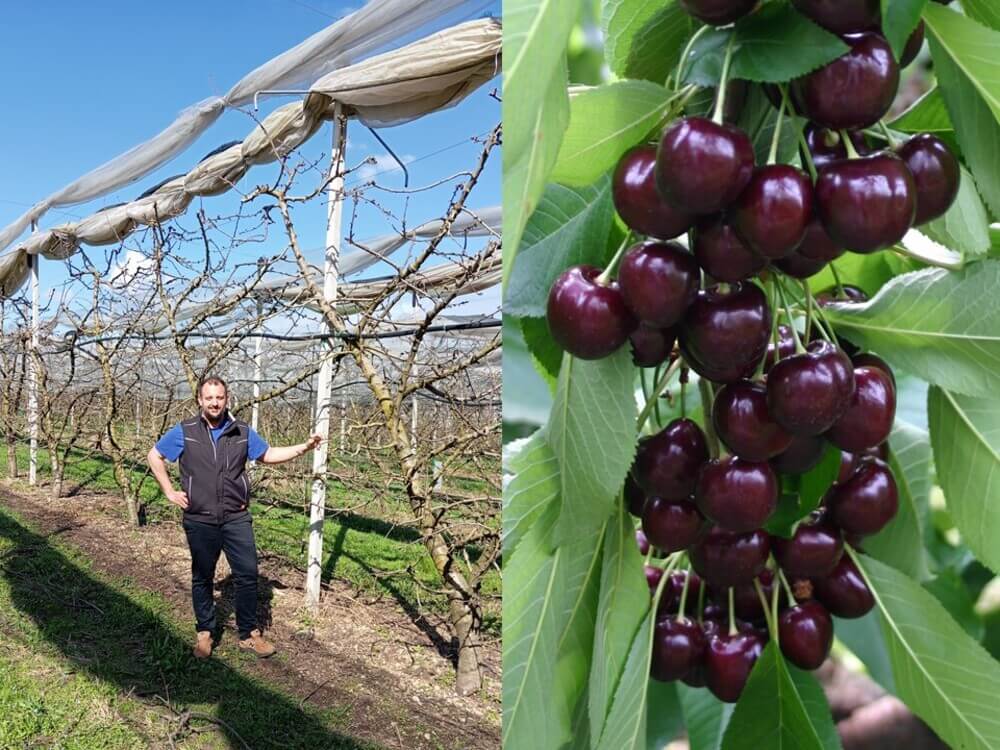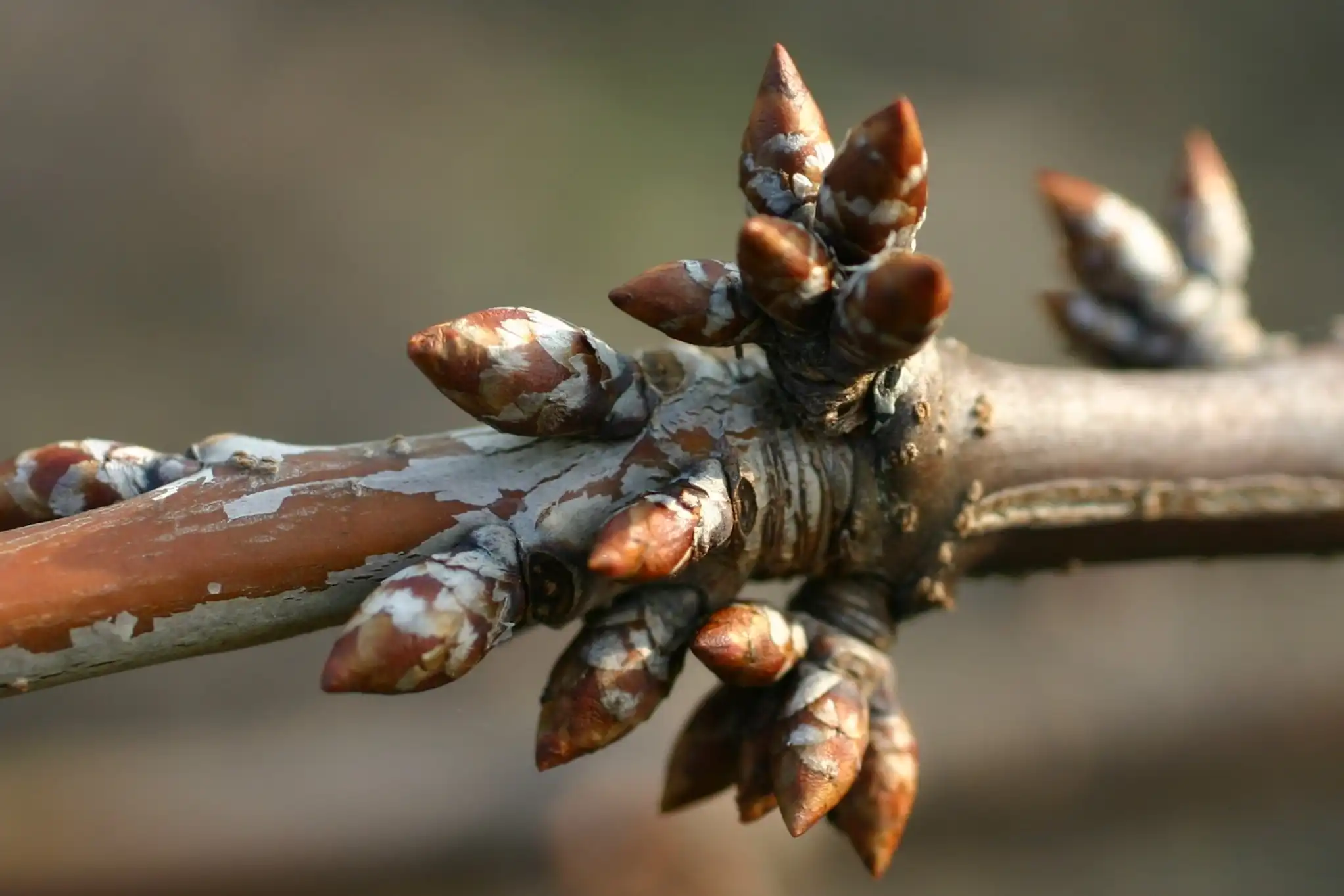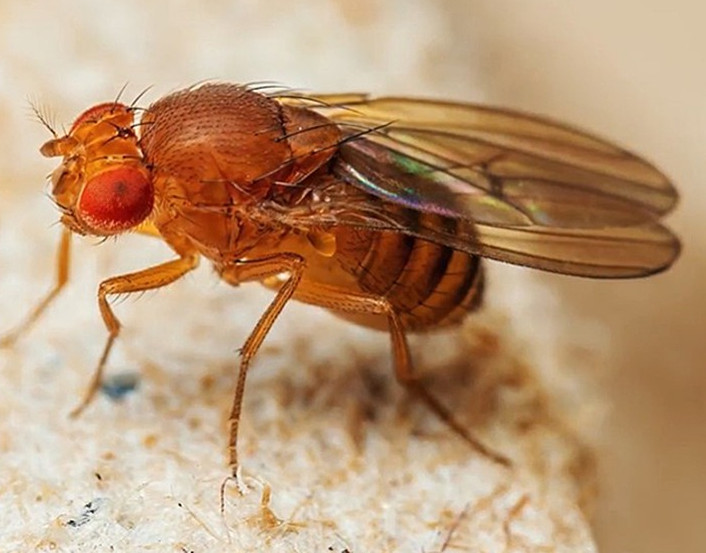
Stefano Lugli - SL Fruit Service
Cherry Times technical-scientific committee
Marysa® PA6UNIBO* is a self-fertile sweet cherry variety born from the same University of Bologna breeding programme that generated the successful Sweet® variety series.
Despite the common genetic origin, during the screening phase, the selection criteria adopted by the Bolognese breeders did not fully correspond, for some quality traits, to those sought. In particular, Marysa® fruits were more acidic and softer than their Sweet® sisters.
On the other hand, from an agronomic point of view, Marysa® presented attributes that were in some cases even superior to the Sweet® varieties, in terms of rusticity and productivity (14-18 t/ha), high harvest yields (20-30 kg/hour/person) thanks to the good fruit size (30 mm), the long stalk (50 mm) and the regular distribution of drupes along the branches and, last but not least, for the good resistence to cracking.
 Image 1.
Image 1.
For these reasons, ten years ago, following the invaluable advice of a Vignola producer who was hosting a varietal selection trial field on his farm, the University of Bologna decided to market the variety under the brand name Marysa®, named after the wife of Nino Quartieri, the cherry grower who first realised the potential of this variety.
 Image 2: Giuseppe and Marisa Quartieri.
Image 2: Giuseppe and Marisa Quartieri.
The variety has spread, not only in its area of origin, but also in the Verona area, where it has found some admirers who have been willing to invest in, and have been able to valorise, this quality of cherry. Among these, Michele Perusi, owner of the 'Sweet Cherry' farm in Buttapietra (Verona) has been cultivating Marysa® for almost a decade in CAB6P rootstocks, bred in palmette style with 4.5m x 3.0m beds, single-row coverage with rainproof sheets and side insect nets.
"I can produce an average of 15t/ha of Marysa®. I believe this is the optimum yield for this variety in my conditions, a yield that can guarantee an average prevailing size of over 28mm. In 2022, I was able to produce over 20t/ha, but with 30% 24-26mm. Furthermore, the following year, the plants went into alternation and I produced just 8t/ha, but with 100% of 32mm and above'.
 Image 3: Michele Perusi.
Image 3: Michele Perusi.
The uniformity of the Marysa® gauges is another merit of the variety. "We are able to harvest and pack directly in the field," Perusi points out, "in loose, unmirrored 5kg bags, 28mm gauge and with yields of 20-25 kg/hour/person. With Marysa® there is no need for a grader! I sell everything abroad, mainly to Germany and Poland, and manage to achieve an average price of 4 euros/kg.
The choice of rootstock is crucial for a self-fertile, very generous and hardy variety. "I have planted a new 8 ha grove, of which 5 ha of Marysa® and the rest of Sweet Aryana® and Sweet Lorenz®. For this new planting I chose MaxMa60 as rootstock, because we need vigour to ensure sufficient vegetative and productive renewal of the plant".
"Furthermore, at least initially, I have no intention of covering. From the experience I have gained over the years, Marysa® is sufficiently tolerant to cracking, on a par with Regina". Regarding the quality of the fruit, "I harvest at an advanced stage of ripeness, dark red, and manage to obtain an interesting product in terms of size, lustre and excellent quality".
 Immagine 5.
Immagine 5.
In terms of quality, Marysa® appeals somewhat less to consumers accustomed to the sweet and sub-acidic taste typical of new varieties, while it is well received by consumers with more refined palates who, along with the sweetness, desire cherries with a certain degree of acidity and aroma.
Marysa®, on the other hand, does not appeal to influencers and local traders. Despite having been selected and propagated in Vignola, once the cherry capital of Italy, Marysa® together with Grace Star® ended up on the black list of cherry varieties proposed for new plantings in Emilia Romagna.
The reason? Cherries that are too soft and not suitable to be processed with the new technologies for selection, preservation and transport. It is a pity that Vignola is not Chile and its target markets are not 10 thousand km away, but KM0 or, when good, 100 km away. On the other hand, Marysa® if harvested well fetches prices of 6-7 euros per kg in the produce markets.
 Immagine 6.
Immagine 6.
In the next episode, an interview with another Veronese producer, Marco Garzetta, who has invested in Marysa® in high-density plantings on Gisela 6 rootstock and markets cherries under the 'Ciliegie di Vania®' brand. Coming soon on Cherry Times
Cherry Times - All rights reserved


















